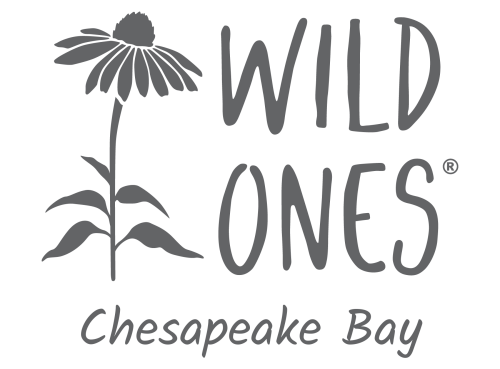If you missed it, check out this recorded presentation by Sara Ressing, Education and Program Coordinator of Wild Ones, on October 28, 2025, as part of the 2025 Monarch Conservation Webinar Series hosted by Monarch Joint Venture.
“Explore native garden design with Wild Ones! For the past 5 years, Wild Ones has offered free, region-specific garden designs crafted by professional landscape designers to help individuals create ecologically sound, beautiful, and sustainable native landscapes. In this session, Sara will demonstrate how these guides can transform your yard into a thriving habitat. From selecting the right plants to incorporating climate-resilient practices, this session will provide practical tips and inspiration. Using examples from Wild Ones’ detailed design guides, we’ll illustrate how native plants not only enhance the beauty of your landscape but also restore our natural environment and provide critical food and shelter for pollinators.”
Q&A Session Answers
- Anti-lawn here but curious if Bermuda has similarly shallow root systems?
Great question! Across the country we have all sorts of types of turf grasses with varying
root depths. Bermudagrass is considered a deep-rooted type with roots reaching 13 feet.
The limiting factor with turf grass root depth is management practices. Frequent shallow
watering, compacted soils, and close mowing encourage roots to remain near the
surface. I think many folks have had the opportunity to weed grass from native beds and
found the roots to be much deeper than expected! - What cover crop do you recommend while planning native beds for a whole lot
(e.g., residential new construction)?
Selection of cover crop really depends on location, site conditions, time frame, and the
end goal. I recently saw a great post by Benjamin Vogt showing off Rudbeckia as cover in
his projects. I have also seen partridge pea (Chamaecrista fasciculata) as an option.
Prairie Nursery also has a lot of great advice and seed mixes for this exact purpose. - What about Straggler daisies as a groundcover?
Calyptocarpus vialis is native to central and south texas and can be a useful native
ground cover. But it can spread aggressively, so be sure to use it intentionally and monitor
closely it in your more formal plantings. - I’ve been collecting/harvesting seeds from native perennial plants along my country
road. Can I just broadcast them into my meadow this fall?
Sure! Fall is the best time to broadcast native seeds. For good results, clear or rake the area so
the seeds touch bare soil, then leave them over winter to get natural cold stratification. - Do you speak to other Wild One groups and is your presentation on YouTube?
Wild Ones chapters across the country are offering education just like this! Check out our
event calendar: https://wildones.org/events/. This exact presentation will be available on
MJVʼs website for rewatch:
https://monarchjointventure.org/resources/monarch-webinar-series/ - What should be considered when selecting milkweed from a garden center? Or is there
a better source for obtaining milkweed?
Too many big box stores readily sell tropical milkweed (Asclepias curassavica) and even
mislabeled it as butterfly weed. Never plant tropical milkweed- it can harm monarchs by
disrupting migration and spreading disease. Always check the plant tag carefully and know the
scientific names of the species you’re looking for. The best place to source milkweed is locally-
native plant or seed swaps with local Wild Ones Chapters, Extension offices, or reputable native
plant nurseries. - What are the books that ID seedlings?
The Gardener’s Guide to Prairie Plants by Neil Diboll and Hilary Cox (2022) is the book I had in
mind. It isn’t strictly about seedling identification, but it has high-quality photos of seedlings,
mature plants, and seed heads for hundreds of species. It’s particularly valuable for the midwest
and great plains. I haven’t found a comparable volume for other regions. - Any favorite plants you recommend for more formal beds in full sun and average
moisture that would likely be more accepted by the general public here in NE Oklahoma?
Northeast Oklahoma sits where the tallgrass prairie meets the Cross Timbers oak savanna,
creating some of the most ecologically diverse regions in North America! Our goal should
always be to let the design feel intentional and regional. A few favorites of mine are grasses like
Schizachyrium scoparium (little bluestem) and Sporobolus heterolepis (prairie dropseed) for
structure. I’ve seen these grasses used in formal designs with Echinacea purpurea (purple
coneflower), Asclepias tuberosa (butterfly milkweed), and Coreopsis lanceolata (lanceleaf
coreopsis). A few small woody shrubs would help anchor the design Ceanothus americanus
(New Jersey tea) and Viburnum rufidulum (rusty blackhaw viburnum) are two great choices.
Sounds like we need to get a new Wild Ones Native Garden Design for OK!
Additional resources mentioned in this webinar:
- Wild Ones Native Garden Design & Climate-Resilient Landscapes, which includes resources, selected references, and suggested additional reading.
- Mt. Cuba Center: renowned botanic garden committed to the conservation of native plants and their habitats
- MJV Ready to Plant (includes Milkweed & Wildflower Vendor Map)

Source of content and images: Monarch Joint Venture
